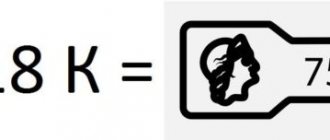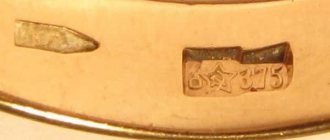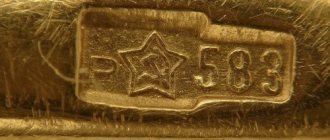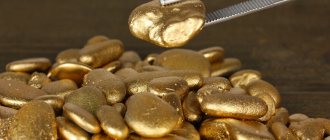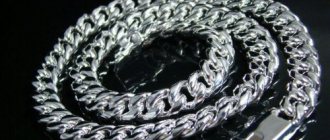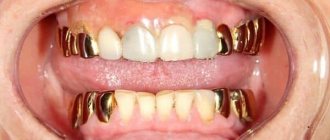Home » Samples of precious metals
Many people on forums on the World Wide Web have repeatedly asked the question “what is the purity of white gold?” This article was written in order to clarify absolutely everything that previously caused dilemmas about white gold.
In this article you will find answers to: “What types of white gold exist?”, “What is 585 white gold?”, “When did white gold first appear?” and many, many others.
White gold became popular all over the world not so long ago, only at the beginning of the last century. But it gained its popularity very, very quickly, simply displacing almost all of its competitors from the market. It was from white gold that various jewelry began to be made, and it was used to frame various precious stones, in particular diamonds. Nowadays, white gold jewelry is a very good indicator of a person’s wealth and excellent taste.
Now it’s worth talking about the white gold sample and what it is. In a sense, this is what is used to determine the quality of gold. Since alloys are very different, the samples also differ from each other. In total, white gold has five different hallmarks, let’s look at them in a little more detail:
What types of white alloy are there?
How spoiled we are! Sellers offer purple gold, and black, green, blue, purple... White gold is especially loved by swindlers. After all, it is easy to obtain a white inexpensive alloy and then pass it off as a low grade of precious metal. Let's see what types of white precious alloy there are.
375 and 500
Pass by if you see such numbers on the stamp - it's a fake. There is not a single “working” alloy with such a gold content, the color of which would be white with a light yellow tint, and the product itself would be durable.
585
Most often, white gold of this standard contains nickel, which negatively affects health. The yellowness is more pronounced.
750
The best sample of a precious metal product. The ligature often contains palladium or platinum, so the jewelry is more expensive.
925
White gold with this hallmark is not produced.
958
Sample for banking precious metal, pure, practically free of impurities. Conventionally white color is given by the alloy components. Therefore, if they offer to buy “a very rare 958 white alloy,” hold your wallet tight—they are scammers.
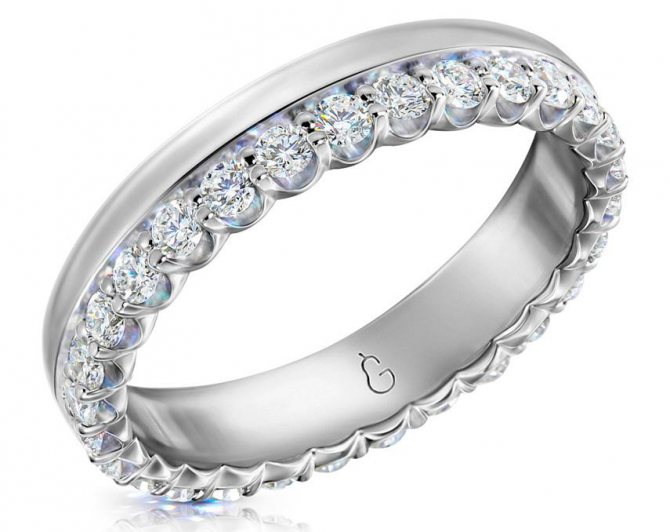
Sample determination methods
Jewelers have long simplified their lives. If it is known for sure that the jewelry contains gold (I already wrote about the touchstone in one of the articles), the guys use the pan-European standard for gold alloys EN 28654. This is an addition to the ISO 8654: 1987 standard “Colors of gold alloys. Definition. Shades of colors and designation."
All colors are divided into 6 groups. Each has an interval of trichromatic coordinates. Using the table of values, the correspondence of the color (and alloy) of the sample to the standard is determined. Chemical reagents are not used to determine the sample.
Of course, the appraiser at the pawnshop tries to play it safe. You can check the authenticity and determine the composition of the alloy and coating using detectors, for example, Gold Detector GS 2532 or Gold Detector WgD 00.
Which sample is the best?
I look at the table of the most common grade of ZlMNTs alloy (gold/copper/nickel/zinc).
| Try | Gold, % | Copper, % | Nickel, % | Zinc, % | Others, % |
| 750 | 75 | 15 | 7,5 | 2,5 | — |
| 750 | 75 | 12,5 | 10 | "Footprints" | 0.03 Re |
| 585 | 58,3 | 25 | 12,5 | 4,2 | — |
| 585 | 58,3 | 16,2 | 17 | 8,5 | — |
| 585 | 58,3 | 22 | 14,7 | 4,8 | 0.2 manganese |
The least amount of nickel, which causes allergies, is in the white alloy 750 (and in general just gold). In addition, the alloy itself is stronger. Therefore, the higher the sample, the better.
Looking ahead, I will say: for the “noble” precious metal, nickel is replaced with palladium and other metals. In this case, a product made of white gold of the same standard will cost more.
Fashion trends
The peak of popularity of the new alloy of the original shade occurred in the 20s of the last century. Consumers noted the harmonious combination of the new metal with precious stones. It hid the yellowness of not too pure diamonds, emphasized the coldness of sapphires, revealed the inner beauty of rubies and allowed us to look at emeralds in a new way. The neutral white color of the jewelry also looked good with a variety of outfits. Unlike silver, 585 white gold was not covered with a black patina and retained its charming shine even after prolonged wear.
But the new alloy had one significant drawback - its price. Jewelry made from it was more expensive than from ordinary gold. With the increase in the cost of platinum, chemists began to actively look for a worthy alternative. Silver was not even considered in this capacity, since in order to achieve a beautiful white color, it had to be added in excess quantities. Otherwise, the alloy was more like the color of light wood.
375 gold, which would really be white, contains so much argentum that it can be called silver.
After much experimentation, it turned out that adding platinum to Au compounds is not the only way to achieve beautiful coloring in jewelry. 14k white gold may contain other impurities. For example, nickel, manganese, and zinc have performed well in this regard. The use of these metals directly or as a secondary brightener in gold alloys has served as a new stage in the development of the jewelry industry.
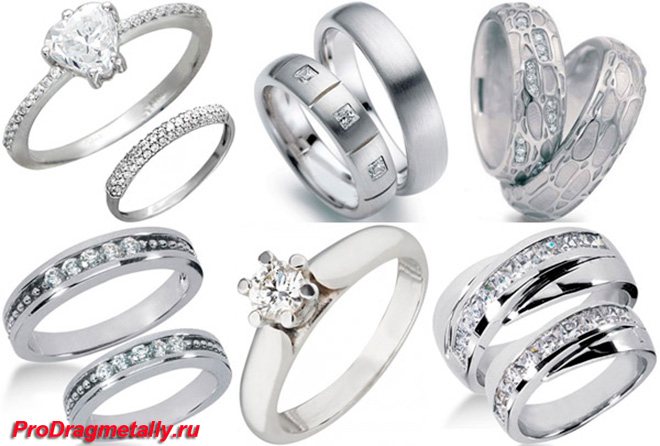
Composition and properties of white gold
The white alloy has its own division into “classes”:
- noble;
- ignoble.
The composition of the ligature and the resulting properties of the two groups are different. Noble metal is obtained by alloying with silver, platinum and palladium.
Ignoble contains:
- based on silver, nickel, copper;
- zinc (added to the alloy to improve casting properties).
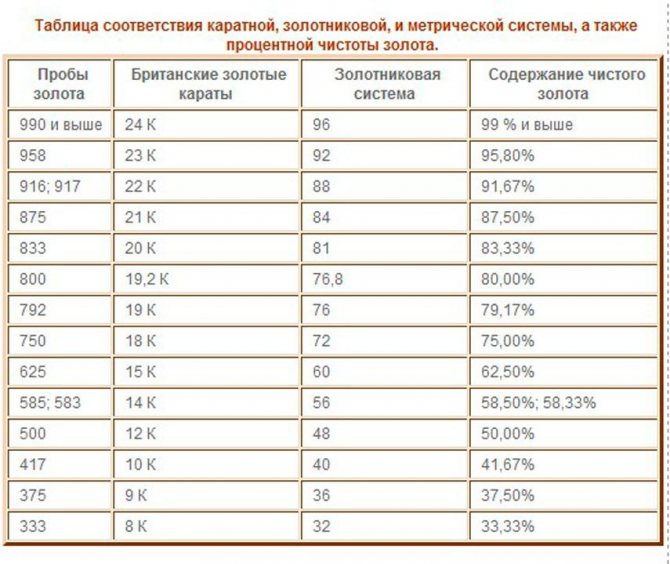
What is responsible for color
Each metal adds certain properties. White color is obtained by adding palladium, platinum and nickel.
Durability and scratch resistance
Hardness and scratch resistance while maintaining ductility are the merit of nickel. Due to this metal, the base white alloy is 2 times stronger and harder than the noble one.
Everything would be fine, but jewelry, due to the nickel oxide formed on the surface, causes allergies in many people when worn for a long time. Therefore, the global trend is moving towards noble white gold (with an increase in cost due to expensive components in the alloy).
Shade range
The color of any white alloy (in accordance with ISO 8654: 1987, European standard EN 28654) is characterized by a yellowish tint. The degree of yellowishness depends on the “nobility”. If two identical white gold rings are placed side by side, the “noble” one will have a lighter yellowish tint.
I looked at the top 10 articles about white alloy. The phrase “the color of white gold can be pale pink or pale brown” is a lie (see standard). And further.
White gold products are not plated with rhodium:
- colored gold was specially developed by jewelers;
- this is not economically viable (cheaper silver is used for rhodium).
Historical reference
Some people believe that white gold is platinum or another metal other than aurum. In fact, this opinion is nothing more than a delusion. There is no chemical element in the depths of the earth that has the properties of true Au, but at the same time has the color of silver. Nevertheless, such discrepancies and confusion did not arise out of nowhere. Platinum was indeed referred to for some time as white gold. Only it had nothing to do with jewelry.
Europeans first learned about the existence of platinum after the conquest of America.
The conquistadors discovered that the Indians used the new metal for their religious rites and valued it on a par with gold. It resembled silver in color, but was refractory and had a higher specific gravity.
At first, the substance was of no value to the Spanish treasury, so the monarch banned its import into the country. The Edict was strictly enforced for more than 40 years. The despicable “silver”, which is how the new metal was named for its similarity to argentum (Spanish plata - silver), was mercilessly drowned in the harbors.
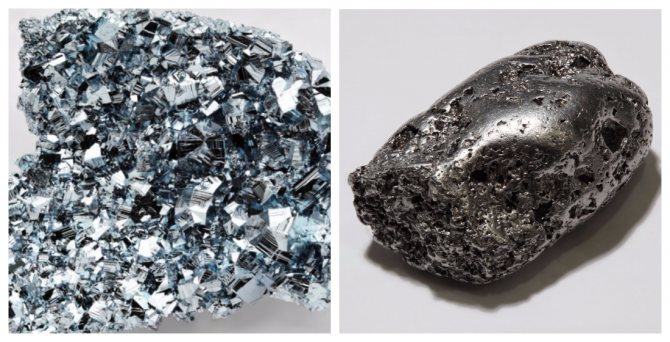
Platinum was rehabilitated by the descendants of that same Spanish king. History has recorded many examples when rulers themselves became counterfeiters due to the impoverishment of financial resources. Thus, silver metal began to be used as a master alloy for alloys. At first, treasurers got away with counterfeiting coins. But then the unexpected happened. Already in the presence of 8% platinum, the gold alloy began to change color to whitish. And with an increase in the ligature content, it becomes completely white. It became unprofitable to counterfeit coins.
How do you get it?
For a person far from alloy technology, jewelry making seems simple. I threw pieces of metal into the crucible according to the proportions, put them on the burner, mixed them and cast the decoration. Unfortunately, metals are characterized by different melting temperatures: gold is already gurgling with might and main, but copper continues to float in pieces.
The production of noble white gold is possible at a temperature of about 1000 °C, base gold - 600...700 °C (annealing). Additionally, reagents are used (for example, boric acid), so the presence of other impurities is specified in the recipe. After annealing, the alloy is cooled slowly to prevent cracking.
This is how two alloys with different physical properties are obtained:
- Plastically deformable (based on Au, Ag, Pd). It is used for the manufacture of blanks by sheet stamping or manual processing.
- Casting alloy (Au, Cu, Ni, Zn). Used for precision casting workpieces.
The history of the appearance of white jewelry alloy
Products made from white gold were delayed for a decade. They appeared in the collections of jewelry houses after the end of the First World War.
First, craftsmen began to actively use platinum: at the beginning of the 20th century. The “garland style” came into fashion (founder Louis Cartier). Silver is a soft metal. To make the product stronger, it was necessary to duplicate the frame with gold. The jewelry turned out to be massive and uncomfortable to wear.
In 1910, Diaghilev's Russian Ballet performed in Paris. “Scheherazade”, with its luxurious decorations and rich multi-colored robes, made such a strong impression on the public that oriental motifs, Turkish trousers and colorful robes came into fashion.
Jewelers begin to conduct “chromatic experiments,” but the war cancels out all plans. Platinum disappears from the market (used in the military industry), and England imposes an official ban on trade in this metal.
After the war, fashion changes: the geometric linear design of gold jewelry requires a modern color scheme. Then brooches, bracelets, clips, and “collars” appear en masse. At the peak of popularity, women's wristwatches in white gold cases (it would enjoy similar success in the 1990s).
Where is white gold used?
Any colored gold is intended for mass-produced jewelry. Made from white:
- jewelry with stones;
- “mix” in combination with individual gold elements of a different color;
- cigarette cases, medals, watch cases.
Advantages and disadvantages of white gold
Alloy advantages:
- Suitable for cold working, casting and casting for setting stones.
- Does not crack when the temperature rises (suitable for annealing and soldering).
- Visually increases the value of jewelry stones, making the appearance of the product more luxurious.
Main disadvantages:
- The alloy is very hard, so processing difficulties arise. Hence the simple design solutions for jewelry.
- It is unlikely that you will be able to melt scrap on your own.
- Precious metal is difficult to work with, so jewelers have problems when working (private craftsmen are understandably reluctant to work with it).
- Upon contact with skin, nickel in the ligature (regardless of the sample) causes an allergic skin reaction.
Composition and main characteristics of the alloy
As you know, the value of jewelry is estimated in carats. For alloys conventionally combined into the concept of “white gold”, the Assay Board determines the value at 9, 12 and 14 carats. At the same time, the pure gold content is 37.5 in 9 carat, 50% in 12 carat and 58.3% or 58.5% in 14 carat value. In the metric hallmark system, 14-carat white gold is more often used, with a specific share of the base metal of 58.5%. But items of 583 standard also belong to this group of metals, since they have the same value - 14 carats.
A more detailed description of white gold, what kind of alloy it is, will help to reveal its physical and chemical properties. The composition of the alloy has different ingredients, which is why the final product - jewelry - has completely different qualities.
Most often, the alloy composition may include:
- Silver;
- Palladium;
- Zinc;
- Nickel;
- Copper;
- Platinum.
The metal acquires a deep white color by adding silver - 10% and palladium - 15%. A metal with a noble metallic luster is obtained with a composition of 23.7% copper and 18% palladium. There are many products produced before 2000 with nickel-zinc filling - 23.5% silver, 12.2% nickel; 6.0% zinc.
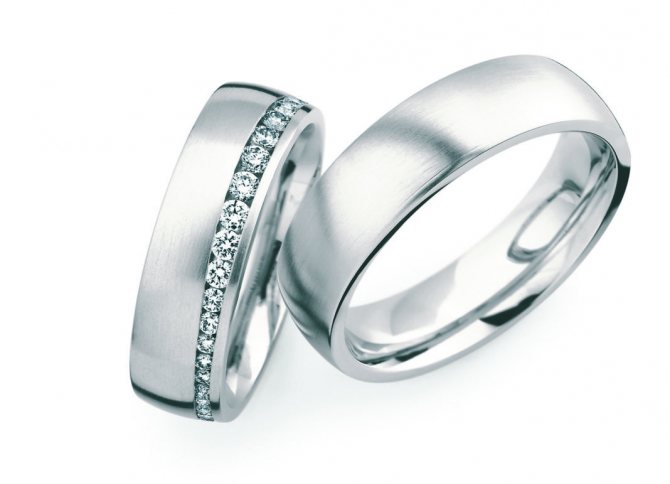
What does white gold look like?
Attention! Since 2000, the use of nickel in white gold has been prohibited in Europe - it causes allergies, therefore nickel-zinc alloys are not used in medical and jewelry products.
Most metals in this group do not cause a chemical reaction (except for nickel-containing ones), therefore white gold, the composition of which is used in jewelry, is considered safe.
Among the physical properties, it should be noted that white gold is perfectly forgable and does not lose its properties during drawing and casting. When polished, it does not lose its mass like ordinary yellow or red. When used as a setting for precious and semi-precious stones, it does not react chemically and has high mechanical properties.
Combination with stones
I get aesthetic pleasure just looking at a professionally cut gem. “Lights” appear inside, the stone attracts with the play of colors. But once it gets fixed, the magic is often lost. The jewelers knew about this.
Therefore, before the use of “paws” back in the 18th century. Foil was placed under the stone to enhance its reflective properties. And in the 19th century. even diamonds were set into silver overlays.
Nowadays white gold is used for these purposes. The stone is fixed “on legs” (light enters from all sides), and the beam reflected from the surface creates an additional stream of light. A not so expensive insert looks more attractive, the shade of the stone becomes richer, closer to the standard (for example, a diamond with yellow tint).
White gold of any standard favorably highlights the beauty of the stone under one condition: the jewelry insert must be transparent (the precious metal is usually not used, for example, with turquoise or coral).
How to distinguish a fake from the original
The buyer does not carry reagents in his purse to the store. To distinguish a fake from an original, you should carefully examine the product.
The jewelry is marked:
- The types of stamps for each metal are different. Any product made of white gold in the Russian Federation must have the following mark:
- shaped like a spatula;
- a clear drawing of a girl in a kokoshnik;
- sample number 750 and 585;
- the letter in front of the picture is the code of the State Inspectorate of Assay Supervision.
- To the left or above the sample there must be a nameplate (numbers and letters of the name of the manufacturer, year of manufacture of the jewelry). The manufacturer's mark is approved and published by the Ministry of Finance of the Russian Federation.
A product purchased abroad may bear a “general mark” (by the way, it is placed at the request of the client). The “scales” pattern is used, mainly on watches. White gold products with such a hallmark are original, since the “common hallmark” was adopted in the EEC at the Vienna Convention to facilitate trade in jewelry.
There may be a print with the image of the rising sun and the sample number. Products with it are also original, and the drawing belongs to the international association Emagold (120 countries).
In order not to be deceived, especially for tourists, I recommend that you check the official state stamp before the trip (for example, an eagle in France).
How to distinguish white gold from silver and platinum
In addition to different markings (stamp), all of the listed products differ in color. White gold of any standard has a yellowish color. Silver is characterized by its silvery-white color, while platinum is naturally pure white (“steel-like”) in color.
Products without sample
Sometimes metals are not tested. Such cases include:
- Gold leaf, gold or silver notches on religious objects, cutlery, home decor elements (vases, boxes).
- Nuggets that are used for decoration (for them it is enough to have a confirming certificate).
Also, the stamp is not placed on metals imported into the country if the amount of gold or silver in them reaches even the lowest standard threshold.
Tips for choosing white gold jewelry
My jeweler friend recommends:
- choose 750th sample - it is stronger than 585th;
- look for nickel-free ligature (require a certificate for the product, not a tag);
- check for the presence of a mark.
Decorations in the following styles remain popular:
- minimalism;
- naturalism (flowers and leaves) with oriental ornaments;
- mix (several shades of gold at once).
The main thing is that you should like the jewelry to the point of butterflies in your stomach - girls understand what I mean.
By the way, it is not recommended for children, teenagers and people with unstable mental health. Precious metal spoils character and gives an illusory reason to look down on people.

Where is the sample placed?
For each product, the location of the sample is different. On rings it can be placed both outside and inside the rim. On earrings, the hallmark is placed on the pin and earring. Pendant jewelry is branded on the hanging ring, and bracelets are branded on the last link at the lock. Wherever the sample is placed, every master strives to make it small and invisible, so it is better to use a magnifying glass to study the inscription.
In our jewelry workshop you can order jewelry of 585 and 750 gold in red, yellow and white. To do this, fill out an application on our website or call the number provided.
Where can you buy or sell
Products made of 585 or 750 carat white gold are offered by jewelry houses, small shops and websites:
- jewelry, especially with stones, looks respectable;
- The fashion trend is to decorate yourself with gold of different colors.
Although self-respecting stores practice buying items back, it is difficult to sell even 750-karat jewelry for an adequate price. Pawn shops only take into account the weight (scrap), often without the work of a jeweler, the artistic value and carat of the stone. It is more common to buy traditional red or yellow gold “from hand”; They look askance at white.
You can try placing an offer at an auction (both in real life and online) or look for a client on specialized sites.
My advice: keep all tags and certificates for the product - having documents will speed up the sale.
White gold price per 1 gram
The price of white gold per 1 g depends on:
- From the sample. So, in a 2 g product, gold of 750 purity is 1.57 g, and gold of 585 purity is 1.176 g. With external similarity and the same weight, the former will cost more.
- Because of the “nobility”, platinum (palladium) additions raise the price.
- From gold exchange rate quotes.
This is the lower bar (for buying). Further, the price of the product includes work, production costs, sales margin, advertising, brand... Therefore, by the way, jewelry is not suitable for investment - there are too many unnecessary components in the price.
I looked at the sites of purchases and pawnshops - they don’t highlight white gold as a separate line, they give a general table. Which, in general, is logical - no matter what the additives are, the percentage of solar metal is the same.
| Try | Price, rub./g |
| 585 | 1770–1775 |
| 750 | 1950–2050 |
The most famous sample systems: carat (British) and metric
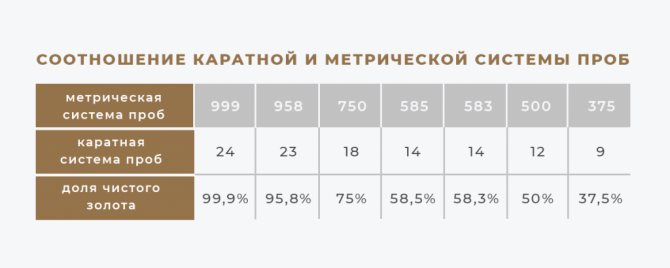
The British karat system is common throughout the world. It is used by jewelers in Europe, Great Britain, the USA and many other countries. According to this system, one carat is 24th of the total weight of the alloy. The purest gold without ligature is considered to be 24 carat gold. Thus, 18-karat gold contains 18 parts gold and 6 parts alloy. The British system divides gold into: 24, 18, 14, 10 and 9 carat.
The metric system of samples was formed in 1927 and operates in the territory of post-Soviet countries. The fineness, expressed in a three-digit number, demonstrates the weight of pure gold in grams contained in a kilogram of the alloy. The highest standard in the metric system is 999. This means that a kilogram of the alloy contains 999 grams of pure gold and only 1 gram of impurity. The metric system divides gold into 958, 750, 585, 375.
Tips for care, cleaning and storage
I have written a short reminder on caring for white gold jewelry - use it.
- Every thing has its place! Jewelry is not stored in bulk; it is carefully laid out in compartments so as not to damage the stones or scratch the surface.
- Precious metal is covered with craters under the influence of acids or hot alkali. Therefore, wash the jewelry with soapy water without aggressive chemicals. Rinse with warm water and polish with a flannel.
- It is acceptable to use dry tooth powder or gruel with water for cleaning.
Reviews
I managed to find inside information about white gold. Think before placing an order from an unfamiliar jeweler.
Buy factory-made products or from a famous foreign brand (Cartier jewelry house, for example). Then the decoration will not crumble or become covered with cracks.
